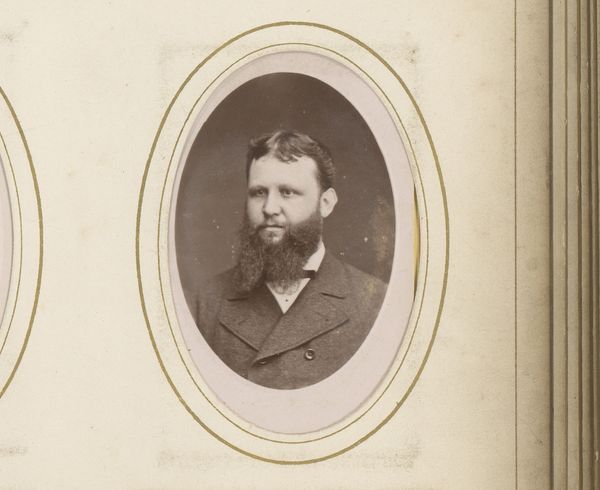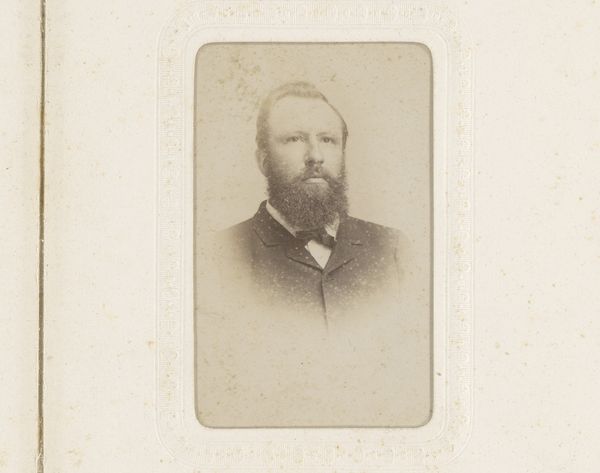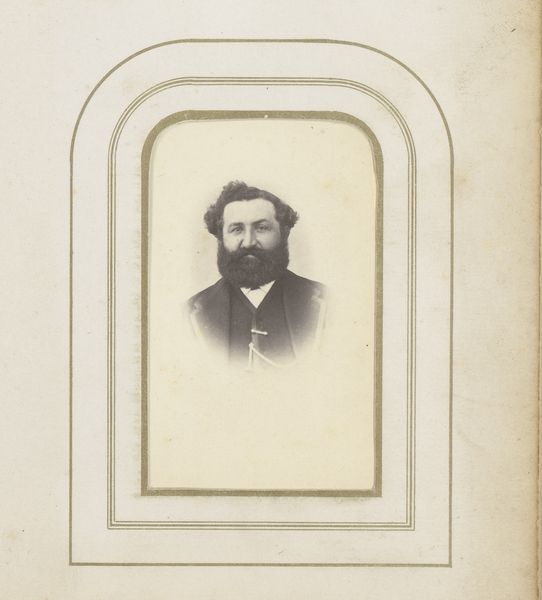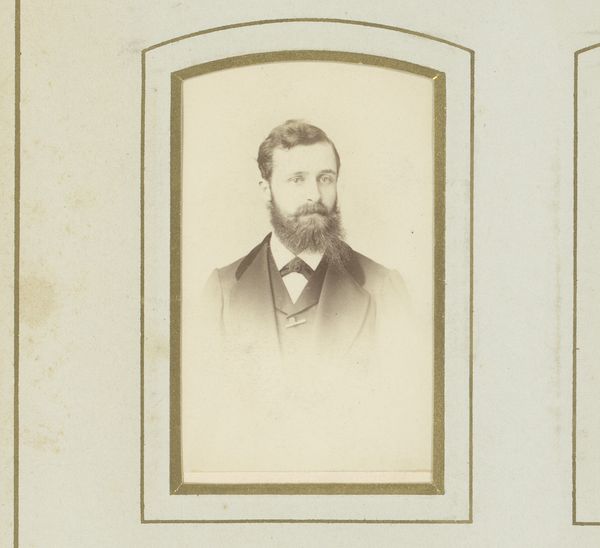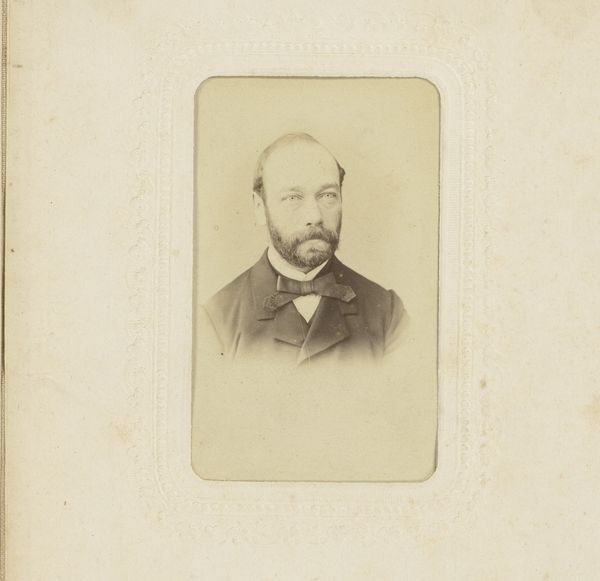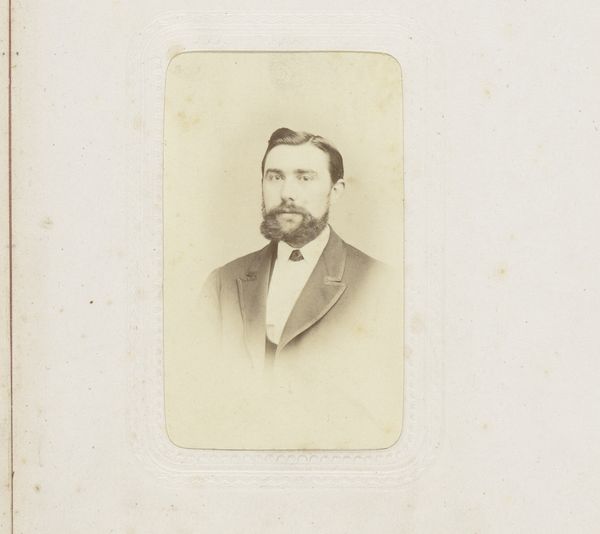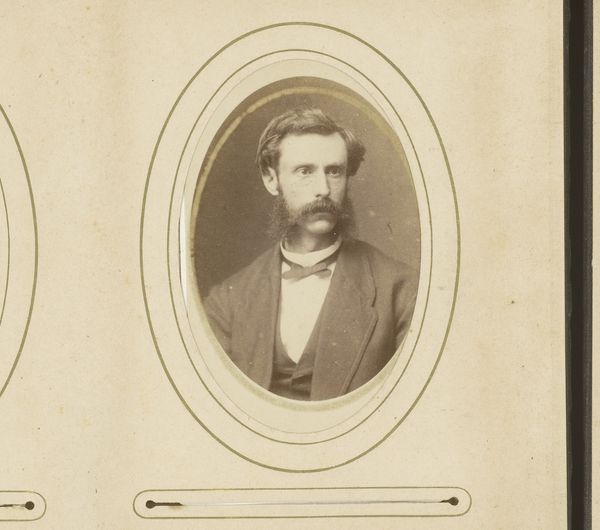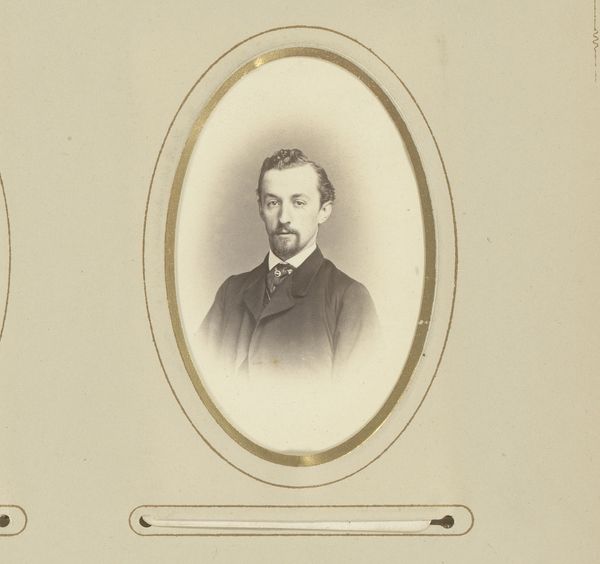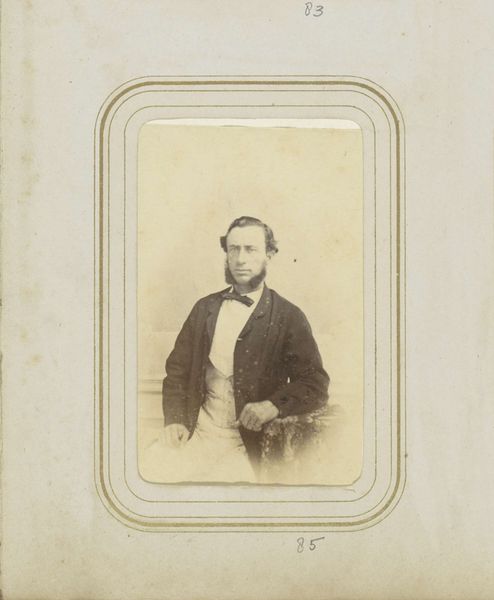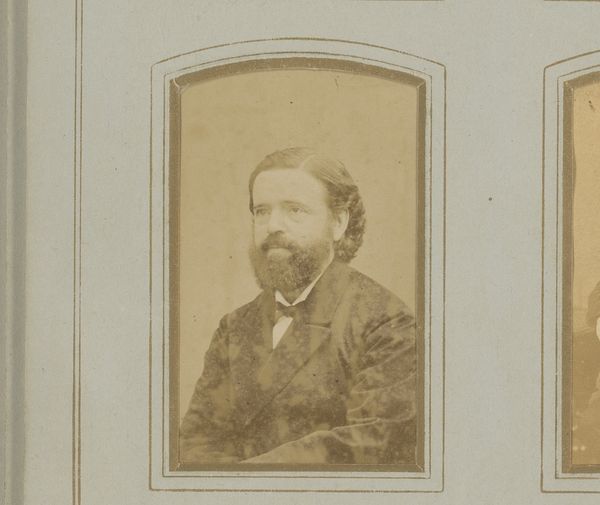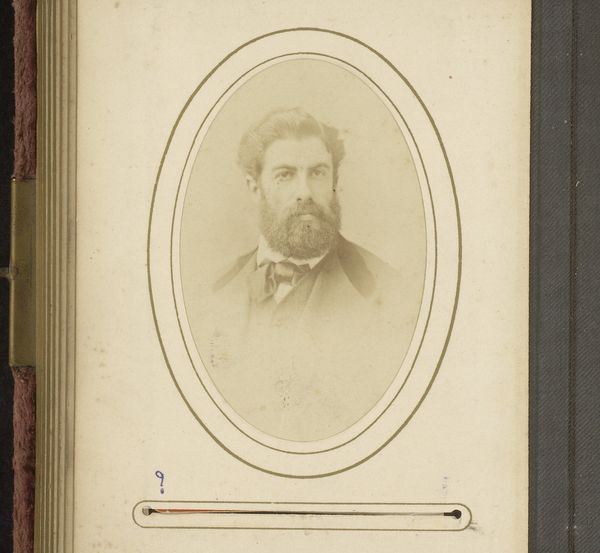
photography, gelatin-silver-print
#
portrait
#
photography
#
gelatin-silver-print
Dimensions: height 85 mm, width 52 mm
Copyright: Rijks Museum: Open Domain
Curator: This portrait, likely taken between 1877 and 1900, presents a man with a substantial beard and wire-frame spectacles. It’s a gelatin silver print, a common photographic process of that era. Editor: He has an air of profound seriousness. The oval framing gives the image a distinctly old-fashioned and slightly melancholy feeling. Curator: Gelatin silver prints replaced earlier processes due to their relative ease of production and greater image stability. The widespread adoption speaks to the democratization of image-making during this period and photography's move from niche practice to a kind of manufacturing process. Editor: And that's very interesting, but what about the man himself? It looks like he is part of an elite group and aware of a higher mission in life. The portrait is staged to subtly suggest power and knowledge. We may not know exactly who this man is, but you immediately realize that he does not represent a random face. Curator: I appreciate how you're situating the portrait within a broader socio-political narrative. Looking closer at the image production—the photographic printing practices then created an illusion of objectivity—while concealing a very gendered process for creating identity in photographs of the period. Editor: These portraits created specific ways to be, but were only available to a privileged few. As technology expands and is adopted by society it recreates societal assumptions, that is also true with photography. It makes you wonder how he'd perceive contemporary photography. The digital era... so many filters and manipulations to create realities... Curator: True. Consider how labour was structured in photography studios then, especially regarding who posed in the images. We have so little information on how a project was put together at that time. Editor: The intersection between who is represented and how creates stories and expectations for the rest of society. It’s vital that these types of conversations about these old processes take place now, for better awareness of society. Curator: Absolutely, questioning these assumptions leads to richer conversations that explore new criticalities within the artistic discourse of the 19th Century. Editor: Well, reflecting on this dignified, bearded gentleman and what he represents today, reminds us of how photography democratised society and spread both realities and falsehoods.
Comments
No comments
Be the first to comment and join the conversation on the ultimate creative platform.
